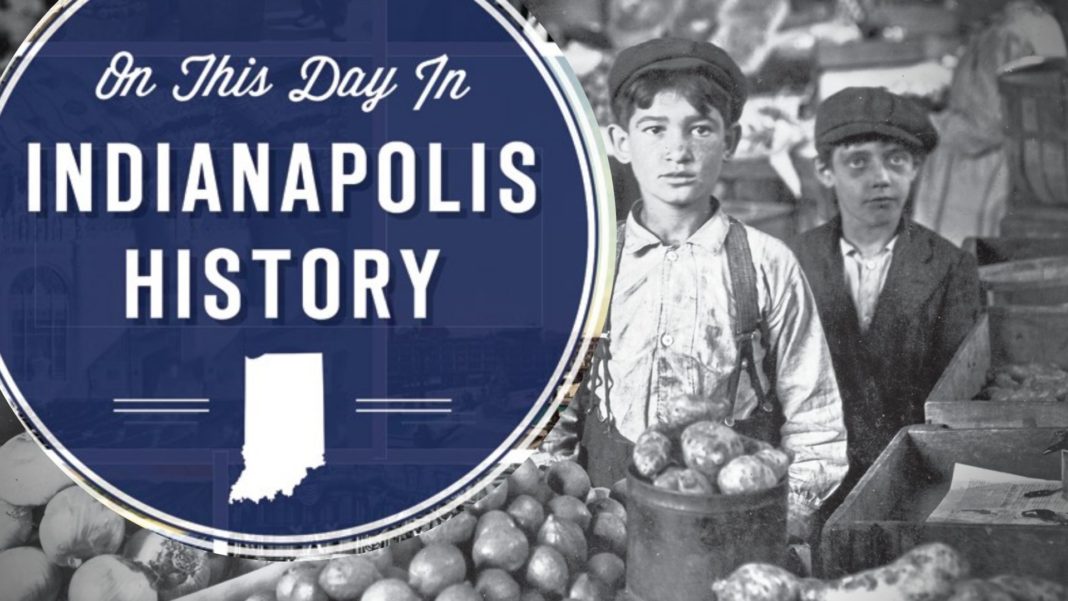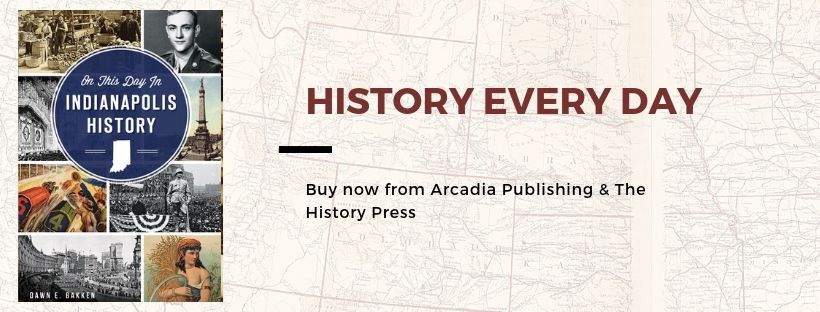
There’s always something happening in Indianapolis—and in Indianapolis’s history. Still, August is a particularly packed month. Here are some forgotten moments from the Circle City.
August 9, 1902
On this day day, a city humane officer patrolled the City Market. The reason? To look into “the charge that market gardeners allow their horses to stand on the street all day without feeding them.” The city had just passed a new ordinance to protect the horses, but it didn’t need to worry about the humans eating well. The City Market building had gone up in 1886 just east of the Circle, allowing city residents to purchase fresh foods in season. The “City Market” column on the August 9 newspaper listed crab apples, cooking apples and pears, as well as “Hoosier canteloupes” (two for five cents). “Corn’s up, selling 7 to 10 cents a dozen,” and heads of cabbage “bigger than a wooden bucket” were selling for one nickel each.
August 13, 1958

By the early 1950s, suburban shopping centers were the newest trend in U.S. retail. Middle-class families who were moving into suburbs wanted conveniently located stores with free and ample parking, as well as access to many stores in one location. On this day in 1958, the first suburban retail center in Indianapolis opened. Glendale Shopping Center attracted attention even before it opened: those who gathered to watch construction were given “sidewalk superintendent” pins with the Glendale logo. The shopping center was an open-air development that offered thirty-seven retail stores in one location, including the very first branch location of the L.S. Ayres department store.
August 16, 2008

In 1984, Indianapolis proudly welcomed the Indianapolis Colts to a new indoor, inflatable-dome stadium. Just like the sports figures who play in them, professional sports stadiums age quickly, and so in August 2008, the ribbon-cutting ceremony for the new Lucas Oil Stadium took place not far from where the previous dome had been deflated, deconstructed and hauled away. The new facility could seat more than sixty-seven thousand fans. It featured a retractable roof that could remain open to take advantage of cool fall afternoons and close to fend off snow, rain and preseason summer humidity. The stadium’s large outside plazas, expansive indoor public spaces and massive video boards made Lucas Oil Stadium a hit with fans and sports journalists alike. The stadium’s distinctive profile is visible from much of downtown Indianapolis.
August 21, 1964
On the morning of August 20, the editors of the Indianapolis Star sent a reporter and photographer to the Hook’s Drugstore on Monument Circle. The next day, the newspaper printed photographs of two hundred teenagers who were standing in line at 9:30 a.m. to buy concert tickets that would not be available until 2:00 p.m. Evidently, Indianapolis was not immune to Beatlemania—the teens were waiting to buy tickets (three dollars each, with a limit of five per person) to see the British group perform at the Indiana State Fair on September 3. American fans of rock-and-roll had heard the group’s single “I Want to Hold Your Hand” in 1963, but the Beatles had not yet set foot on U.S. soil. They arrived in America for the first time in February 1964, appeared twice on the Ed Sullivan Show and performed in Washington, D.C., and New York City. Their first American concert tour took place in August 1964, when the Beatles performed in twenty-three cities across the country for their screaming fans—including those in Indianapolis.

August 30, 1916
On this day, the Circle Theater opened on Monument Circle. The building was the city’s first dedicated movie theater. In 1928, The Jazz Singer, the first “talking picture,” made its Indianapolis debut on the Circle’s screen. Built at a cost of more than half a million dollars, the Neoclassical Revival building featured an interior with elaborate plaster moldings on ceilings, walls and the proscenium frieze framing the stage. For sixty-five years, the facility functioned as a movie theater and a venue for stage shows. In 1981, in a city full of suburban multi-screen movie theaters and modern venues for stage productions, the Circle Theater closed and its already poor condition deteriorated. After a massive $7 million renovation, the theater reopened in 1984 as the new home of the Indianapolis Symphony Orchestra. The Hilbert Circle Theater once again operates as a center of culture in downtown Indianapolis.


